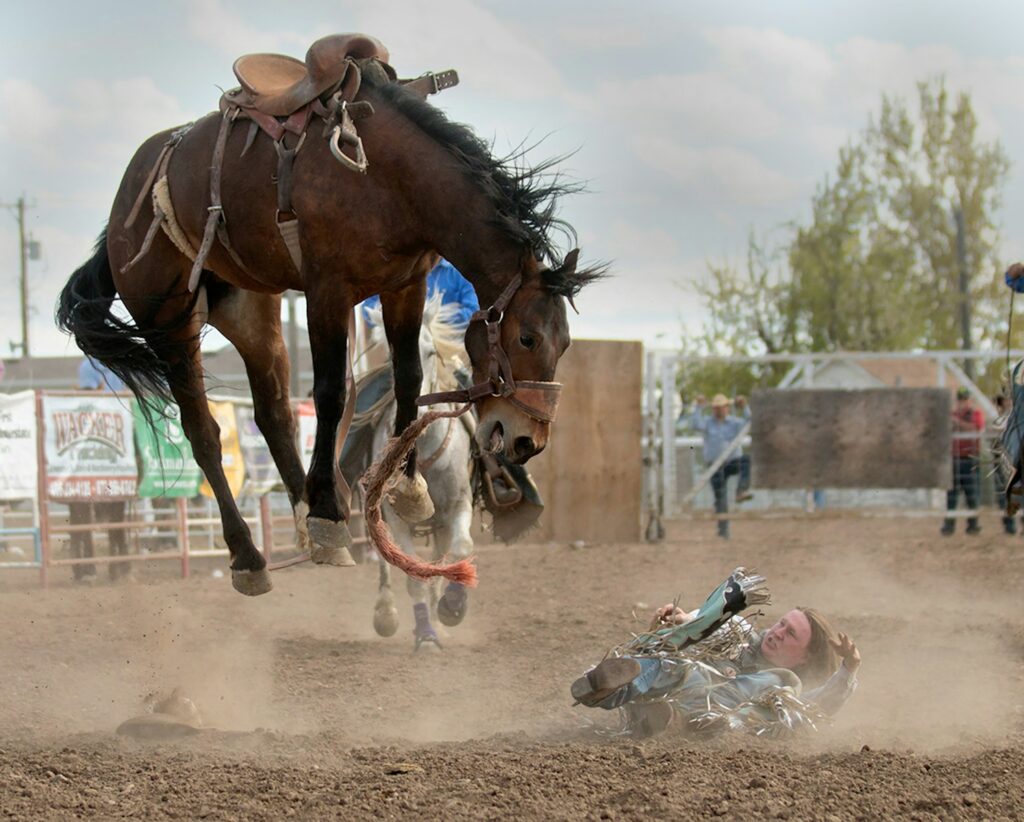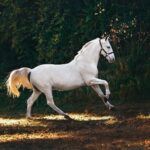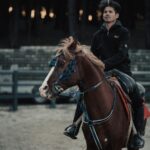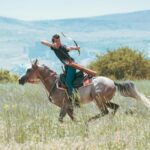Cantering should be an exhilarating experience for both horse and rider, but when your equine partner suddenly transforms into a bucking bronco, that joy quickly turns to fear and frustration. Bucking at the canter is not only dangerous but also indicates underlying issues that need addressing. Whether you’re dealing with an occasional kick-out or a horse that consistently channels its inner rodeo star, understanding the root causes and implementing the right training strategies can turn these challenging moments into opportunities for growth. This guide will help you identify why your horse bucks, how to respond effectively at the moment and develop a training plan to overcome this behavior for good.
Understanding Why Horses Buck at the Canter
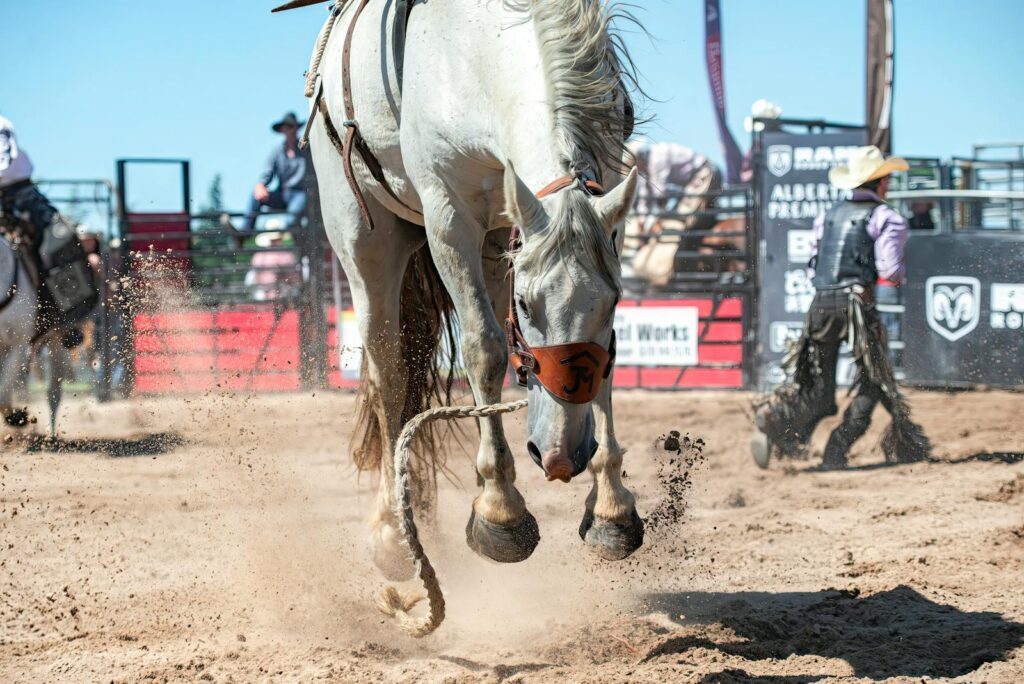
Bucking is rarely a random or malicious behavior but rather a way for horses to communicate when something isn’t right. Physical discomfort is a primary culprit, with back pain, poorly fitting saddles, or dental issues often manifesting as bucking, specifically at the canter due to the increased physical demands of this gait. Psychological factors can be equally influential, with fear, anxiety, or past traumatic experiences causing a horse to resist cantering. Additionally, excess energy from limited turnout or rich feed can lead to explosive behavior when asked to move into a more energetic gait. Understanding that bucking is a symptom rather than the actual problem is crucial for developing an effective training approach.
Ruling Out Physical Pain
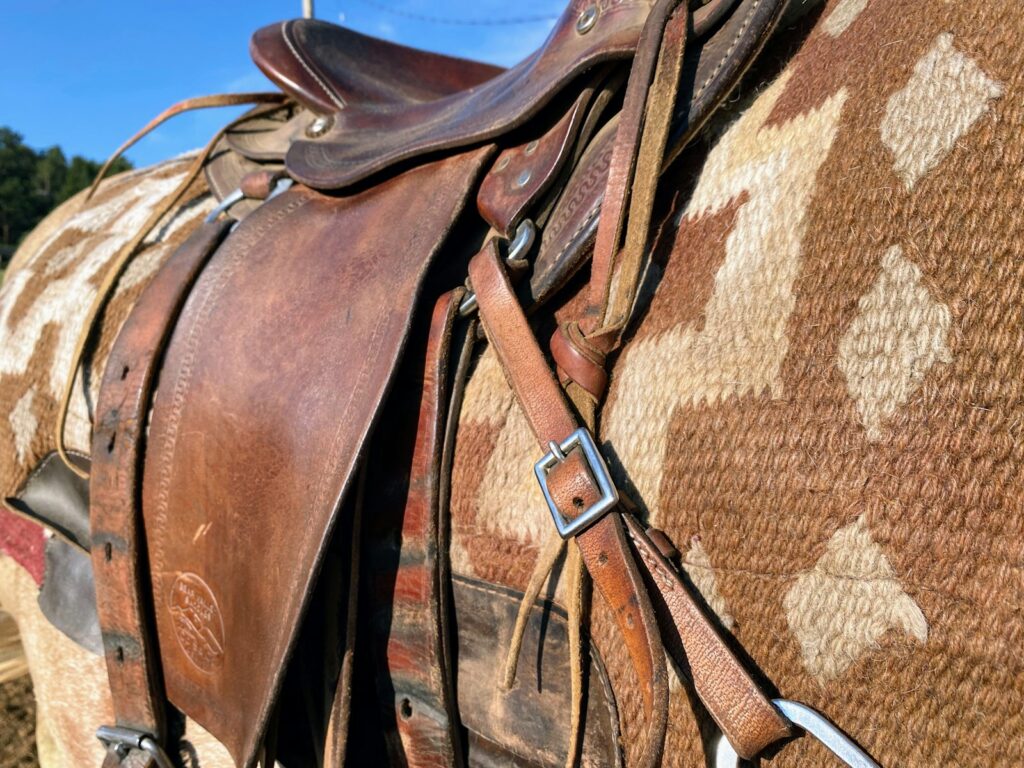
Before addressing bucking as a training issue, it’s essential to eliminate physical discomfort as the cause through a systematic approach. Schedule a thorough veterinary examination focusing on back health, dental condition, and soundness to identify any underlying medical issues that might be causing pain during canter work. Have a qualified saddle fitter evaluate your equipment to ensure proper fit, paying particular attention to pinching at the withers, bridging along the spine, or pressure points that could become problematic in the canter position. Examine your horse’s feet and shoeing, as imbalances or discomfort can manifest differently at various gaits. Only after receiving veterinary clearance should you proceed with behavioral training approaches, as asking a horse in pain to “behave better” is both unfair and counterproductive.
Addressing Tack and Equipment Issues
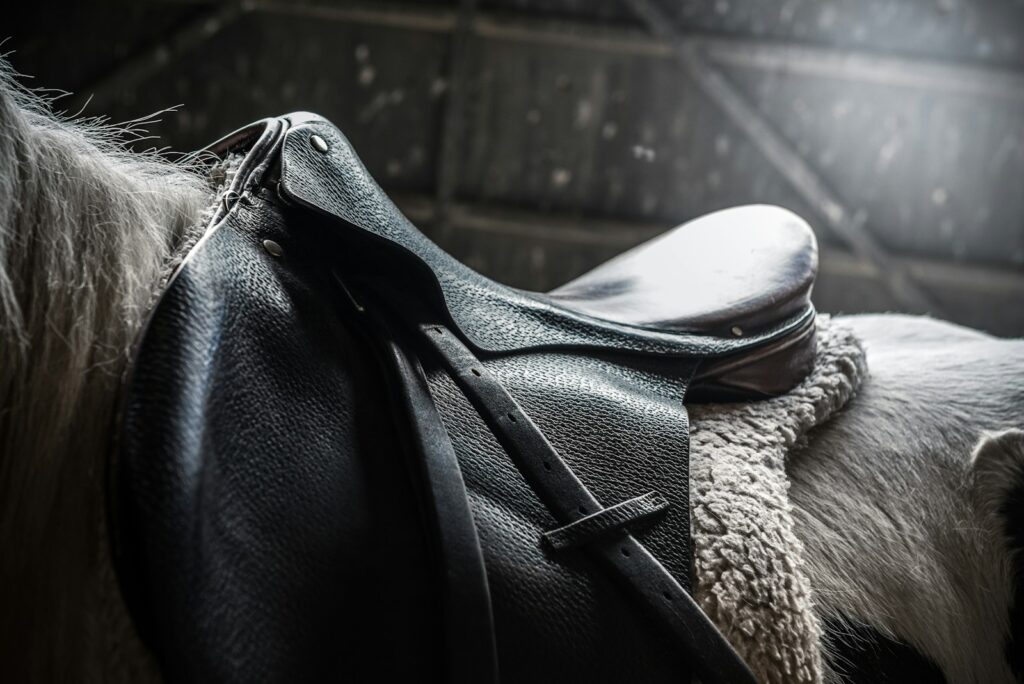
Ill-fitting equipment can turn an otherwise willing horse into a reluctant, bucking partner, particularly at the canter where movement patterns intensify. Beyond saddle fit, evaluate whether your girth might be causing discomfort, especially if it’s positioned directly behind the elbow, where it can pinch during the canter motion. Check if your bit is appropriate for your horse’s mouth conformation and training level, as excessive pressure or incorrect positioning can cause resistance when asked to collect for the canter transition. Consider whether your horse might benefit from a half pad, specialized girth, or different bridle style to alleviate pressure points that become problematic at higher speeds. Remember that equipment that seems fine at the walk and trot may still cause issues at the canter due to the different biomechanics involved.
Developing a Solid Foundation
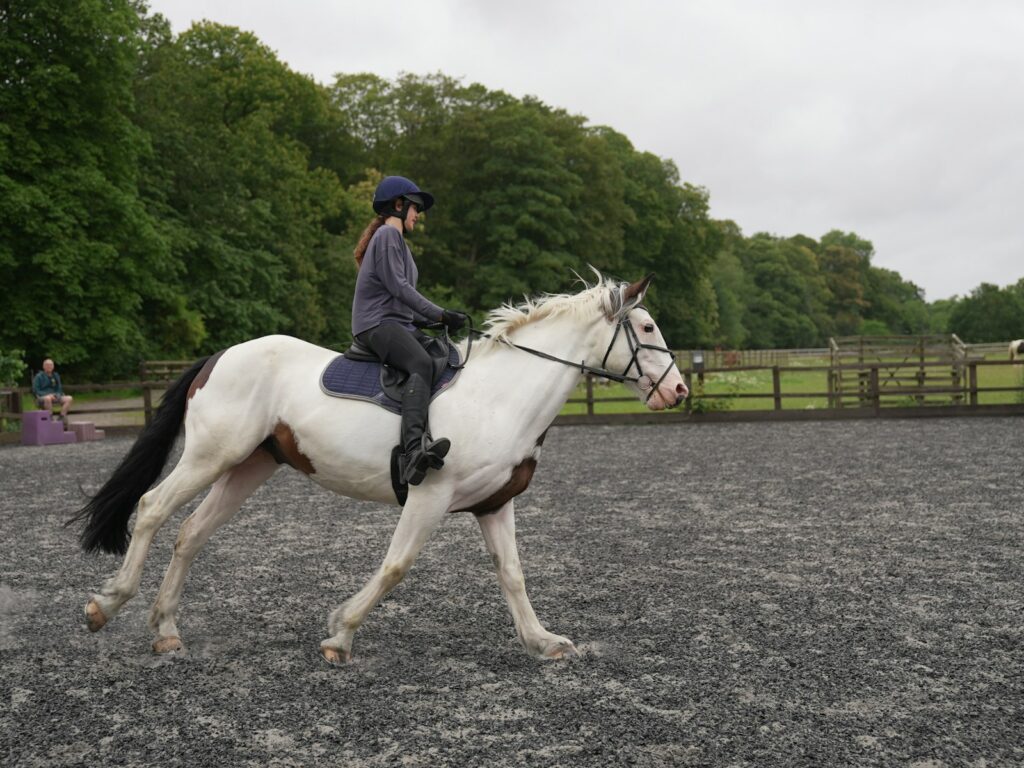
Bucking often indicates gaps in basic training that become apparent when the complexity increases at the canter. Ensure your horse has mastered fundamental skills like yielding to leg pressure, accepting rein contact, and maintaining balance in transitions before expecting a smooth canter. Practice exercises that strengthen your horse’s hindquarters and core, as physical weakness can make cantering uncomfortable and lead to evasive behaviors. Work extensively on smooth, balanced trot work with plenty of transitions within the gait to build the strength and balance needed for proper cantering. Establishing clear communication through consistent aids and boundaries in simpler work creates a foundation that will carry over to more challenging gaits.
Practicing Effective Groundwork

Groundwork provides an invaluable opportunity to address canter issues without the added complexity of a rider’s weight and balance. Lunging with purpose (not just running in circles) helps develop the horse’s balance, strength, and responsiveness to voice commands while allowing you to observe movement patterns that might signal physical discomfort. Incorporate ground poles and cavaletti to encourage the horse to engage its hindquarters properly and build the muscling needed for balanced cantering. Practice transitions on the lunge, particularly from trot to canter and back, rewarding smooth responses and addressing resistance before similar issues arise under saddle. For horses with serious bucking habits, consider groundwork in a round pen, where you can safely work through resistance while maintaining control.
Creating Successful Transitions
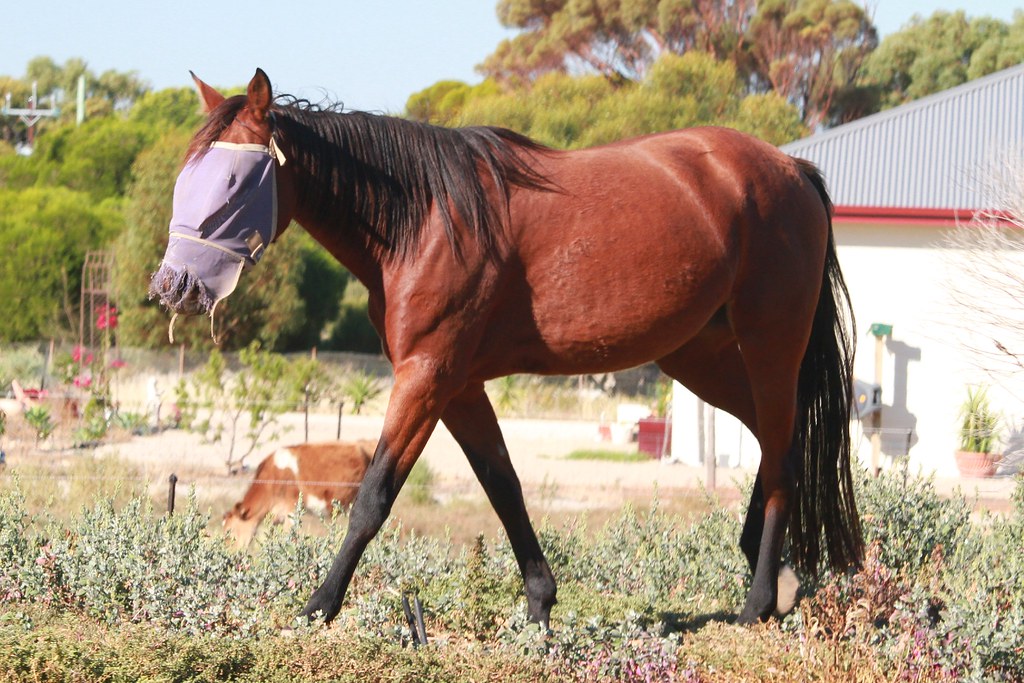
Many horses buck because of poorly executed canter transitions that throw them off balance or create anxiety. Analyze your riding position and aids to ensure you’re not inadvertently setting your horse up for failure through conflicting signals or unbalanced requests. Practice asking for canter from a forward, energetic trot rather than a sluggish one, as a horse needs sufficient impulsion to strike off correctly. Consider using a slightly larger circle when introducing canter work, as the bend naturally encourages the correct lead, while the continuous curve helps prevent the powerful straight-line bucks that can unseat riders. Break the transition process into smaller steps—perhaps first asking for just a few strides of canter before returning to trot—gradually building duration as your horse gains confidence.
Perfecting Your Riding Position
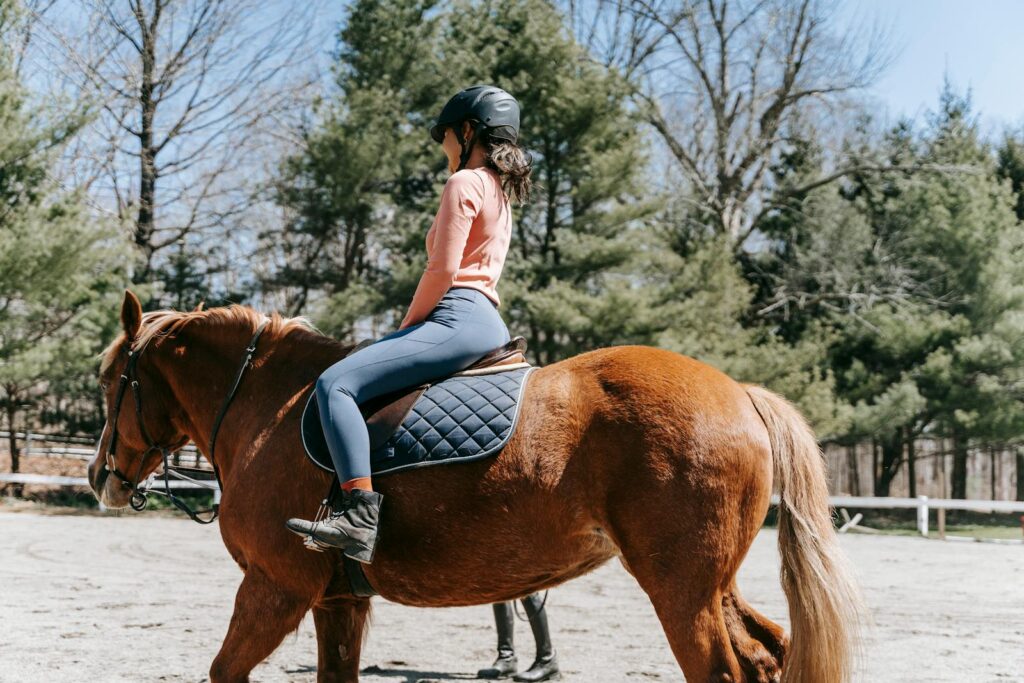
Your seat and balance play crucial roles in preventing and managing bucking at the canter. A tense, braced rider can inadvertently encourage the very behavior they’re trying to avoid by restricting the horse’s natural movement or sending mixed signals. Develop an independent seat through no-stirrup work and exercises that challenge your balance, ensuring you can stay centered without gripping with your legs or hands. Practice maintaining a deep, following seat with your upper body slightly inclined forward at the canter, positioning yourself to absorb motion rather than being thrown behind it. Work with an experienced instructor who can provide real-time feedback on your position and help identify subtle ways you might be contributing to your horse’s resistance. Remember, improvement in the rider often translates directly to improvement in the horse.
Implementing Progressive Desensitization
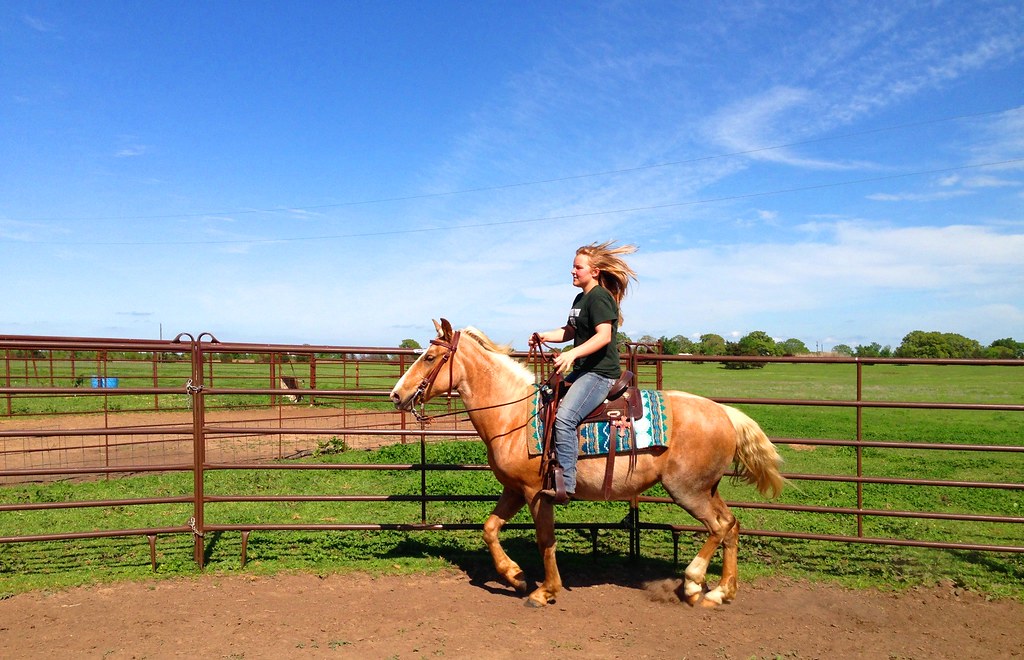
For horses whose bucking stems from fear or anxiety, systematic desensitization offers a path to building confidence. Identify specific triggers that precede the bucking—whether it’s cantering in certain locations, particular environmental factors, or specific combinations of aids. Create a training plan that gradually introduces these elements in controlled, low-pressure situations, staying just below the threshold that triggers resistance. Use positive reinforcement to reward even small improvements, helping your horse form new, positive associations with previously stressful scenarios. Consider incorporating groundwork or liberty work to address anxieties without the added pressure of a rider’s weight or expectations. This process requires patience and consistency, but it builds lasting confidence rather than forcing compliance.
Managing Energy Levels Appropriately
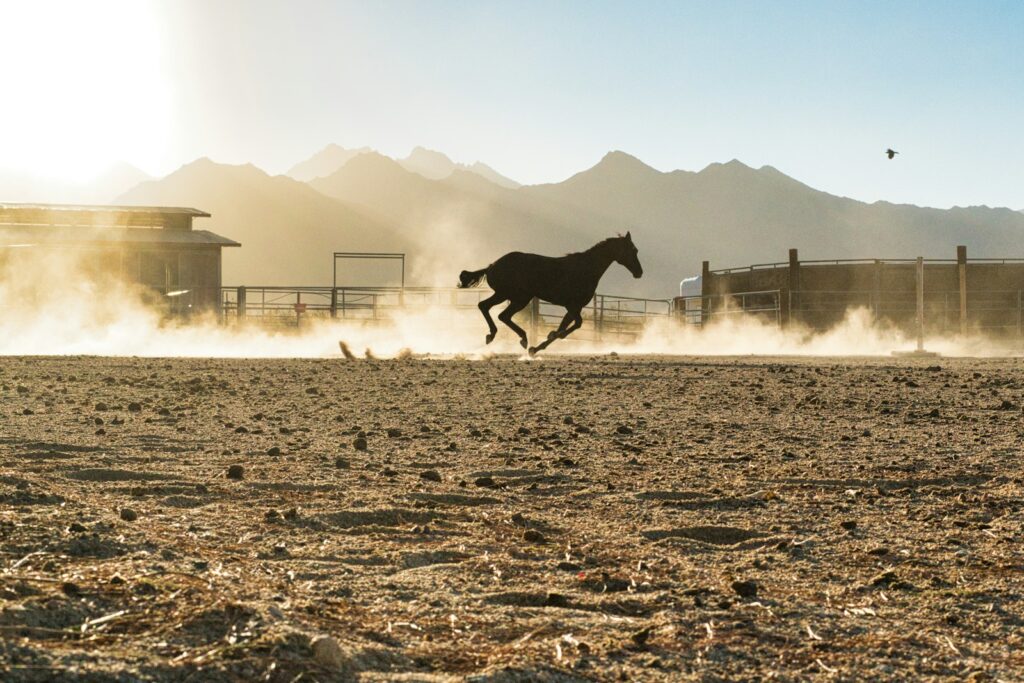
Excess energy is a common contributor to bucking behaviors, particularly in young or naturally athletic horses. Evaluate your horse’s turnout schedule, exercise routine, and diet to ensure they align with its energy needs and temperament. If possible, incorporate more frequent turnout with companions, as social play and voluntary movement help dissipate energy constructively. For horses on limited turnout, implement a consistent exercise program that includes a variety of activities and intensity levels, rather than relying on sporadic, intense workouts. Adjust feed accordingly—potentially reducing concentrates and sugars while ensuring adequate forage for digestive health. On predictably high-energy days, plan ahead with lunging or liberty work before riding to take the edge off without reinforcing the idea that bucking results in less work.
Responding Effectively When Bucking Occurs
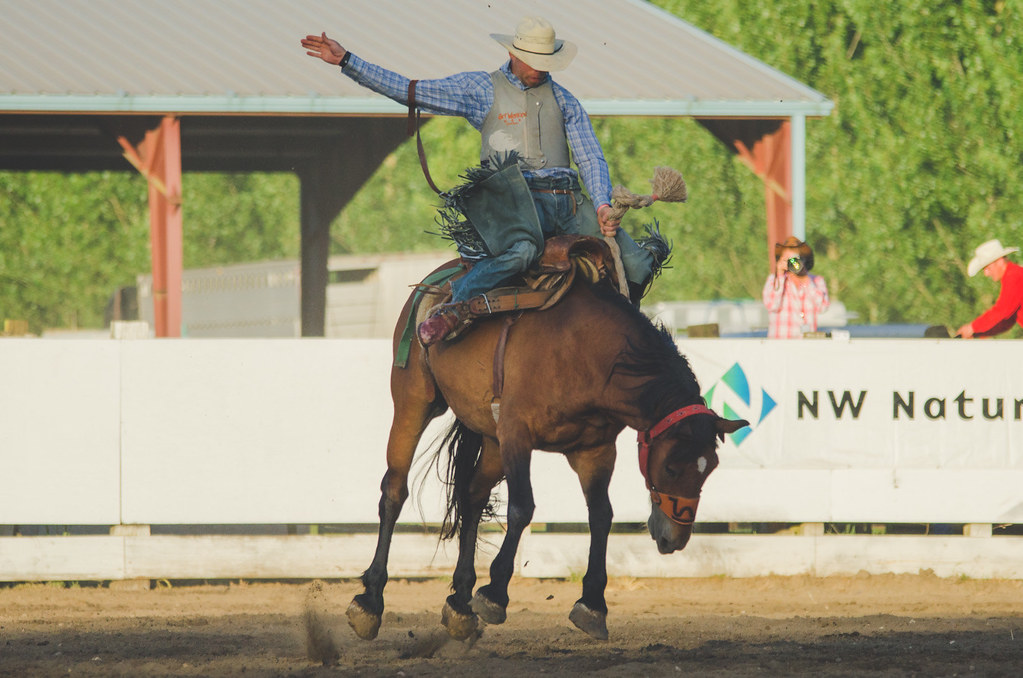
Despite your best preventive efforts, you may still encounter bucking—and your response in these moments significantly impacts future behavior. At the first sign of a buck, sit deep in the saddle, bring your legs slightly forward, and maintain firm, even contact with both reins to prevent the horse from dropping its head. If possible, direct the horse into a controlled circle, as it’s harder to buck powerfully while turning, and continue encouraging forward movement rather than allowing it to stop. Use your voice confidently and firmly—not in panic—repeating a command your horse recognizes from groundwork. Once you’ve regained control, return immediately to structured work instead of ending the session. This helps ensure the horse doesn’t associate bucking with getting out of work.
Working with Professional Help
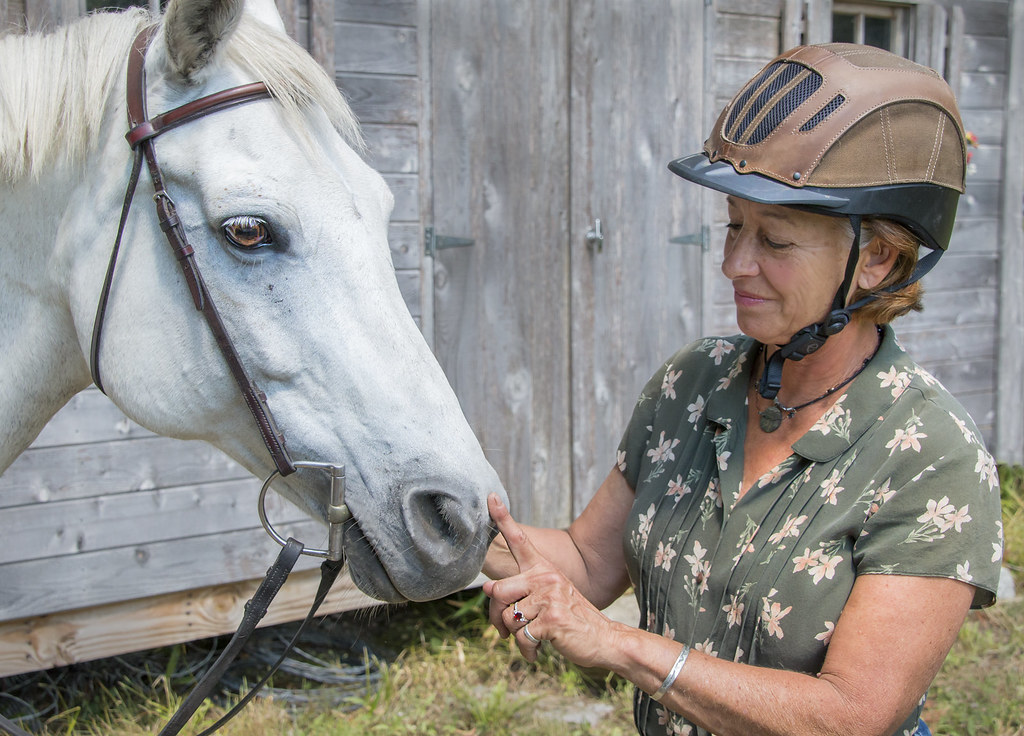
Persistent or dangerous bucking warrants professional intervention from experienced trainers with specific expertise in behavioral issues. An objective professional can identify subtle contributing factors you might miss and develop a systematic retraining program tailored to your situation. Consider sending a horse with severe bucking issues to a trainer for initial retraining, understanding that you’ll need instruction on maintaining that progress when the horse returns. When selecting a professional, look for someone whose methods focus on understanding and addressing root causes rather than simply suppressing symptoms through force or intimidation. The best trainers will involve you in the process, teaching you the skills needed for long-term success rather than creating dependency on their services.
Building Confidence Through Variety
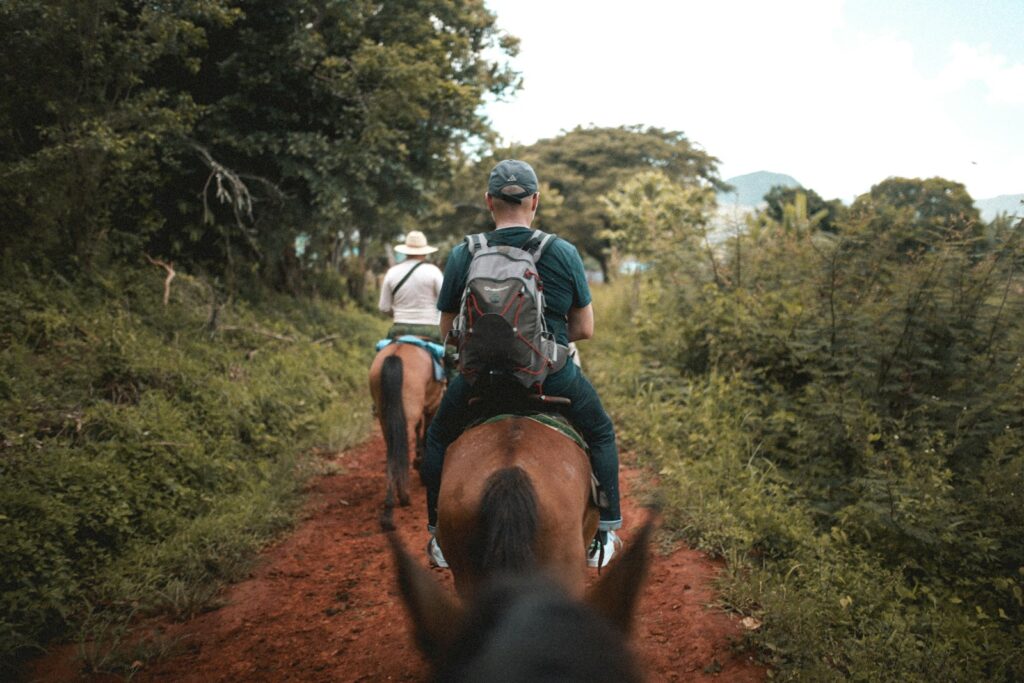
Horses that buck from tension or anxiety often benefit from a varied training program that builds confidence across different environments and activities. Incorporate trail riding on quiet, familiar routes to provide mental stimulation and natural balance challenges that strengthen the muscles needed for collected work. Experiment with different exercises within each ride, rather than drilling repetitive patterns that can build anticipation and resistance. Introduce ground poles, small jumps, or lateral work to engage your horse’s mind and develop body awareness, which contributes to balanced cantering. Consider group lessons where your horse can gain confidence by following steady companions in canter work, learning from their example while benefiting from the support of others present.
Maintaining Progress Long-Term
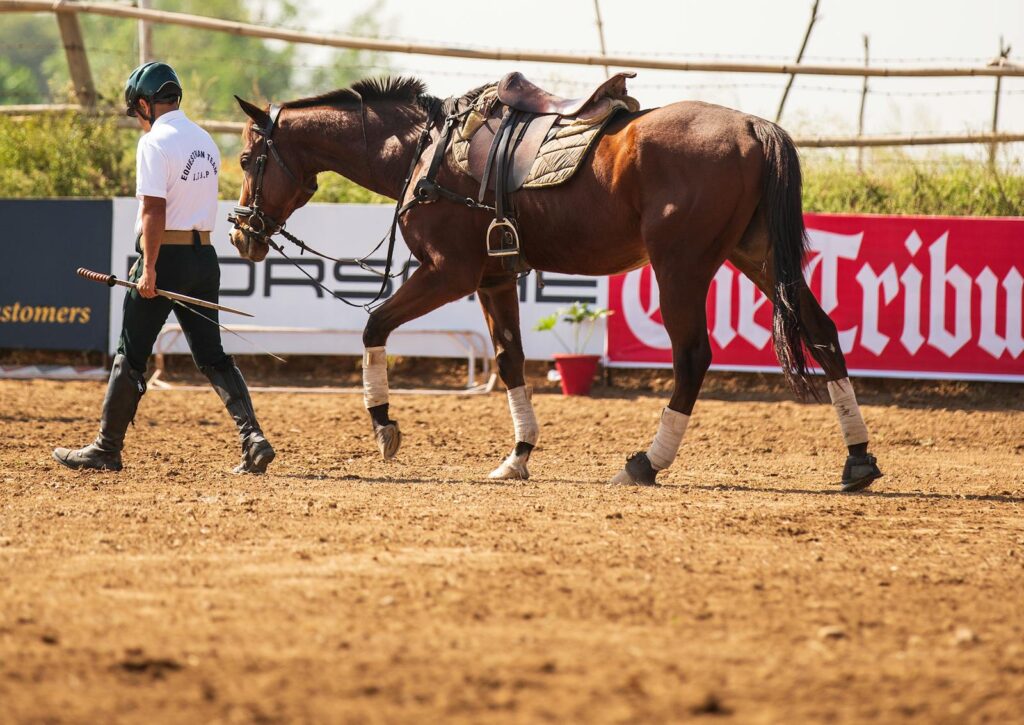
Resolving bucking issues requires ongoing commitment to the training principles that created improvement, rather than returning to problematic patterns once immediate issues are resolved. Establish a consistent maintenance program that includes regular groundwork refreshers, regardless of how well the horse performs under saddle. Continue working with knowledgeable eyes on the ground periodically to catch subtle regressions before they develop into full problems. Schedule regular equipment checks and veterinary evaluations to ensure physical comfort remains optimal as your horse’s body changes with age and conditioning. Remember that progress rarely follows a linear path—expect occasional setbacks, especially during changes in season, routine, or environment, and respond with consistent reapplication of successful approaches, rather than frustration or punishment.
Transforming a horse that bucks at the canter into a reliable, confident partner requires patience, systematic training, and attention to both physical and psychological factors. By approaching the issue as a communication opportunity rather than simply a behavior problem, you’ll develop deeper trust and understanding with your equine partner. Remember that each horse is an individual with unique needs and triggers—what works for one may not work for another. The journey may be challenging, but the relationship you’ll build through this process will enhance every aspect of your partnership, creating a foundation of mutual trust and respect that extends far beyond just solving the cantering issue.

